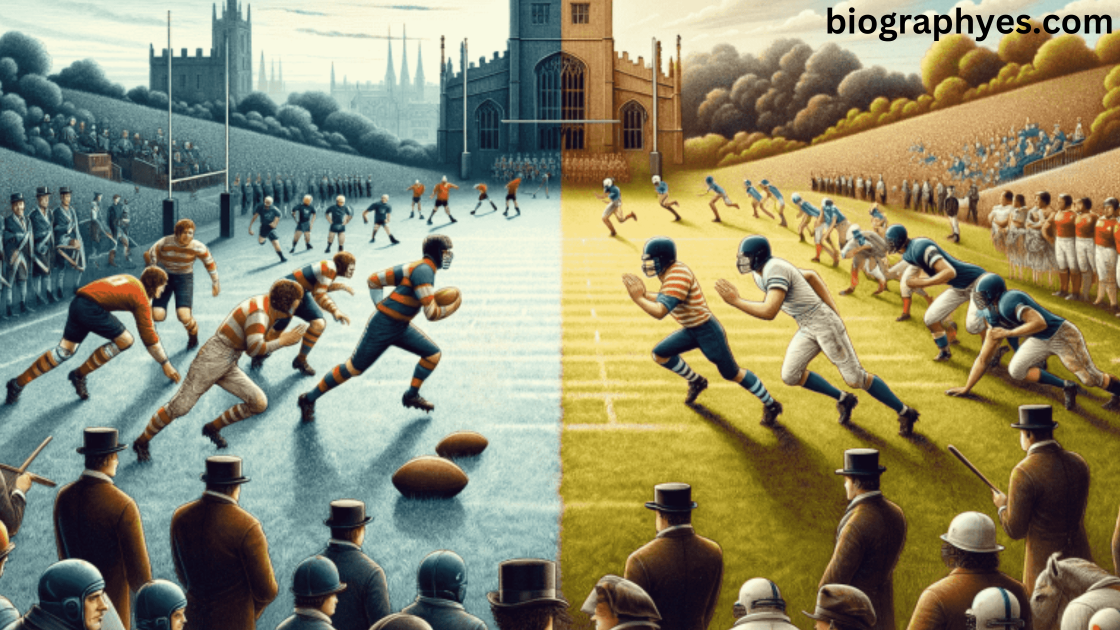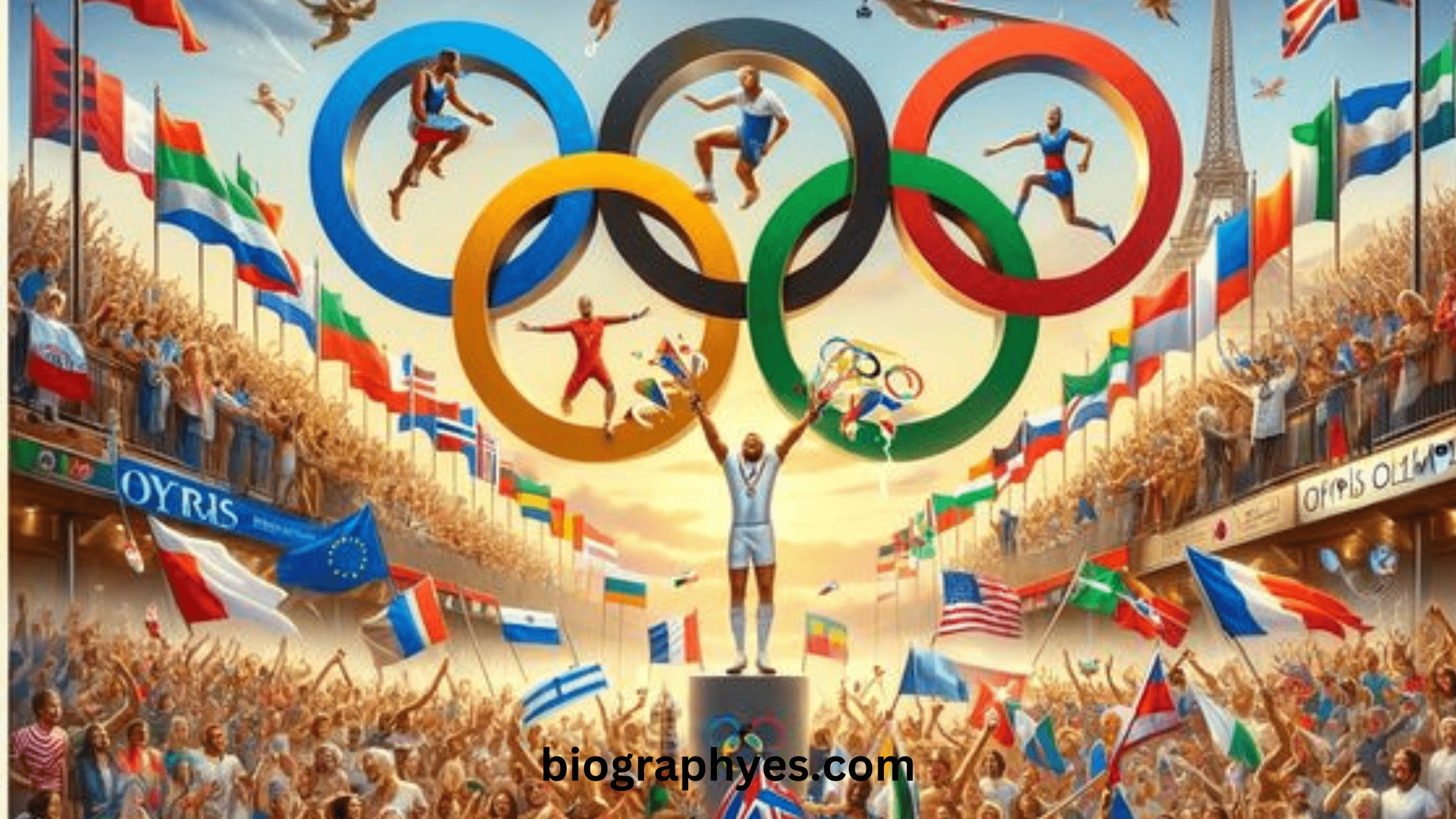Football
Welcome to the thrilling world of football! Whether you’re a passionate fan, an aspiring player, or simply someone intrigued by the beautiful game, this article is your ticket to exploring the ins and outs of this globally beloved sport.
Football, with its roots tracing back centuries, has evolved into a cultural phenomenon that unites people from all walks of life. From the fervent atmosphere of packed stadiums to the exhilarating moments of goal celebrations, every aspect of football has the power to captivate and enthral. In this article, we will delve into the history, rules, and strategies that make football the ultimate team sport.
Get ready to dive into the gripping rivalries between football clubs, the rise of legendary players who leave a lasting legacy, and the iconic tournaments that keep us on the edge of our seats. Whether you want to understand the offside rule or uncover the tactics behind a successful corner kick, we’ve got you covered. So lace up your boots and join us on this journey through the world of football, where passion, skill, and unbridled excitement sets the stage for unforgettable moments.
The history of football
The origins of football can be traced back to ancient civilizations, where various forms of the game were played for centuries. From the ancient Greeks and Romans to the indigenous cultures of China and Mesoamerica, the concept of kicking a ball towards a goal has been a part of human history for millennia.
However, the modern game of football, as we know it today, emerged in the 19th century in England. In 1863, the Football Association was founded, establishing the first set of standardized rules for the sport. This marked a significant turning point, as it helped to unify the various forms of football played across the country and laid the foundation for the game’s global expansion.
Over the next few decades, football spread rapidly throughout Europe and beyond, with the first international match played between England and Scotland in 1872. The game’s popularity continued to grow, and by the late 19th century, football had become a beloved pastime for people of all social classes. The formation of professional leagues, such as the English Football League in 1888, further solidified football’s status as a major spectator sport.
The rules and regulations of football
The rules of football are designed to ensure fair play, maintain the integrity of the game, and create an enjoyable experience for players and spectators alike. At the core of the game are the basic rules that govern the field of play, the number of players, and the objective of scoring goals.
The field of play is a rectangular pitch, typically measuring 100-130 yards in length and 50-100 yards in width. The field is divided into two halves, with each team defending their own half and attempting to score in the opponent’s goal. The goals, which are positioned at the center of each end of the field, measure 8 yards wide and 8 feet tall.
Each team consists of 11 players, with one designated as the goalkeeper. The goalkeeper is the only player allowed to use their hands and arms within their own penalty area, while the other 10 players must use their feet, chest, or head to control and pass the ball. The objective of the game is to score more goals than the opposing team by kicking the ball into the net.
Over the years, the rules of football have undergone various modifications and additions to address emerging issues and enhance the overall experience of the game. From the offside rule to the introduction of video assistant referees (VAR), the governing bodies of football have continuously worked to refine the regulations, ensuring that the sport remains fair, exciting, and accessible to players and fans alike.
Popular football tournaments and leagues
The world of football is home to a diverse array of prestigious tournaments and leagues that captivate audiences globally. From the iconic World Cup to the high-octane domestic leagues, these competitions showcase the pinnacle of football talent and the unbridled passion of fans.
The FIFA World Cup, held every four years, is undoubtedly the most prestigious and widely followed football tournament. Featuring national teams from around the world, the World Cup is a true celebration of the sport’s global appeal, with billions of fans tuning in to witness the intense battles for the coveted trophy. The tournament’s rich history, legendary moments, and the sheer drama of the knockout stages have cemented its status as the ultimate showcase of football excellence.
Complementing the World Cup are the various domestic leagues that have captured the hearts of football enthusiasts worldwide. The English Premier League, the Spanish La Liga, the Italian Serie A, the German Bundesliga, and the French Ligue 1 are just a few of the renowned leagues that attract the world’s top players and command a massive global following. These leagues are renowned for their intense rivalries, tactical sophistication, and the sheer quality of the football on display.
In addition to the global and domestic tournaments, the sport also boasts a rich tapestry of continental competitions, such as the UEFA Champions League, the UEFA Europa League, and the Copa Libertadores, which showcase the best clubs from their respective regions. These tournaments offer a platform for the world’s elite teams to compete against each other, creating a captivating spectacle that transcends national boundaries.
Famous football players
The world of football has been graced by a pantheon of legendary players who have left an indelible mark on the sport. From the silky skills of Pelé to the mesmerizing dribbles of Lionel Messi, these icons have inspired generations of fans and shaped the game’s evolution.
One of the most revered figures in football history is the Brazilian maestro, Pelé. Widely regarded as one of the greatest players of all time, Pelé’s incredible talent, goal-scoring prowess, and unparalleled achievements have cemented his legacy. During his illustrious career, he won three World Cup titles with the Brazilian national team and scored an astounding 1,279 goals in 1,363 matches, a feat that is unlikely to be matched.
Another iconic figure is the Argentine superstar, Lionel Messi. Known for his dazzling dribbling skills, pinpoint passing, and uncanny goal-scoring ability, Messi has captivated audiences worldwide with his mesmerizing performances. As the all-time top scorer for both Barcelona and the Argentine national team, Messi’s achievements include numerous domestic and international titles, as well as a record-breaking seven Ballon d’Or awards, recognizing him as the best player in the world.
In addition to these legends, the sport has also witnessed the rise of other iconic players, such as Diego Maradona, Cristiano Ronaldo, Zinedine Zidane, and Ronaldinho, each of whom has left an indelible mark on the game through their unique skills, leadership, and contributions to the sport’s evolution. These players have not only inspired their teammates and fans but have also become cultural icons, transcending the boundaries of the sport and leaving a lasting impact on the global football landscape.
The evolution of football equipment and technology
The game of football has undergone a remarkable transformation over the years, with advancements in equipment and technology playing a pivotal role in shaping the sport’s evolution. From the humble beginnings of leather-bound balls to the cutting-edge innovations of the modern era, the evolution of football equipment and technology has revolutionized the way the game is played and experienced.
In the early days of the sport, the football itself was a relatively basic and rudimentary object, often made from a leather casing stuffed with materials such as hair or feathers. As the game gained popularity, the design and construction of the ball underwent significant improvements, with the introduction of more durable and uniform materials, such as synthetic leather and modern stitching techniques.
The development of football boots has also been a crucial aspect of the sport’s evolution. From the heavy, studded boots of the past to the lightweight, high-performance cleats of today, the evolution of footwear has enhanced players’ traction, agility, and overall on-field performance. The integration of advanced materials, innovative sole designs, and customizable features have allowed players to optimize their movements and gain a competitive edge.
The most significant technological advancements in football, however, have been in the realm of sports science and data analytics. The use of GPS tracking, video analysis, and advanced performance metrics have transformed the way teams approach training, tactics, and in-game decision-making. These tools provide coaches and players with unprecedented insights into physical and tactical aspects of the game, enabling them to make more informed decisions and optimize their performance.
Football tactics and strategies
The world of football is a tapestry of intricate tactics and strategies, woven together by the brilliant minds of coaches and players. From the intricate positioning of players on the field to the calculated decision-making during gameplay, the tactical dimension of the sport has evolved into a captivating and complex art form.
At the heart of football tactics lies the formation, which dictates the positioning and responsibilities of each player on the field. From the traditional 4-4-2 to the more modern 4-3-3 or 3-5-2 formations, the choice of formation is a critical decision that shapes a team’s defensive and offensive approach. Coaches must carefully consider the strengths and weaknesses of their players, as well as the opposition, to determine the most effective formation for a given match.
Beyond the formation, football tactics encompass a wide range of strategies and techniques, such as pressing, counterattacking, possession-based play, and set-piece routines. Pressing, for instance, involves applying intense pressure on the opposition to win back possession quickly, while counterattacking relies on rapid transitions from defense to offense to catch the opponent off guard. Possession-based play, on the other hand, emphasizes controlled and patient build-up, aiming to dictate the tempo of the game and create scoring opportunities.
The execution of these tactical approaches is further enhanced by the individual and collective skills of the players. The ability to read the game, make split-second decisions, and execute technical maneuvers with precision is crucial in determining the success of a team’s tactical approach. The interplay between tactics and individual brilliance is what makes football such a captivating and dynamic sport, with each match offering a unique tactical battle between the opposing teams.
Football’s impact on society and culture
Football has transcended the boundaries of the sport, becoming an integral part of the social and cultural fabric of communities around the world. The game’s ability to bring people together, foster a sense of identity, and inspire passion and loyalty is unparalleled.
At the grassroots level, football has served as a powerful tool for social integration and community development. In many underprivileged areas, the sport has provided a safe haven for youth, offering them an opportunity to channel their energy and talents into a positive pursuit. Through participation in local leagues and community-based programs, individuals from diverse backgrounds come together, forging bonds and breaking down social barriers.
The impact of football extends beyond the field, as the sport has become a powerful platform for social and political expression. Fans have used the game as a means to voice their opinions, advocate for social causes, and challenge the status quo. From the iconic “Ultras” fan groups in Europe to the grassroots movements that have emerged in various parts of the world, football has become a powerful vehicle for collective action and social change.
Moreover, the global reach of football has made it a cultural phenomenon, transcending national boundaries and uniting people across the world. The shared experience of watching a thrilling match, the collective joy of a last-minute winner, and the camaraderie among fans have all contributed to the sport’s ability to foster a sense of global community. The iconic imagery, chants, and traditions associated with football have become a universal language, connecting people from diverse backgrounds and celebrating the sport’s ability to bring the world together.
Football fan culture and traditions
The world of football is not just about the sport itself; it is a rich tapestry of fan culture and traditions that have evolved over generations. From the passionate chants echoing through packed stadiums to the unwavering loyalty of supporters, the essence of football fandom is a captivating aspect of the game.
At the heart of football fan culture are the devoted supporters who dedicate their time, energy, and emotions to their beloved teams. These fans, often organized into passionate groups known as “ultras” or “supporters’ clubs,” are the lifeblood of the sport. They create an electrifying atmosphere, leading chants, waving banners, and igniting the collective spirit of the crowd. The unwavering loyalty and unwavering support of these fans have become a defining characteristic of the football experience, transcending the boundaries of the game itself.
The traditions that have emerged within football fan culture are equally captivating. From the pre-match rituals and the ceremonial raising of team flags to the post-match celebrations and the sharing of stories among supporters, these traditions have become an integral part of the football experience. The passing down of these customs from one generation to the next has helped to forge a sense of identity and belonging among fans, creating a shared understanding and appreciation for the sport’s rich heritage.
Beyond the stadium, the influence of football fan culture can be seen in the broader cultural landscape. The iconic jerseys, scarves, and other team merchandise have become fashion statements, with fans proudly displaying their allegiance. The shared experiences of watching matches, discussing tactics, and debating the merits of players and teams have fostered a sense of community, transcending geographical boundaries and creating a global network of football enthusiasts.
The business of football
The world of football has evolved into a thriving global industry, with the sport generating billions of dollars in revenue and captivating audiences worldwide. From the lucrative television rights and sponsorship deals to the commercialization of team merchandise and the rise of football-related businesses, the business of football has become a complex and multifaceted ecosystem.
At the heart of the football business are the major leagues and governing bodies, such as FIFA, UEFA, and the various domestic leagues. These organizations have leveraged the sport’s global popularity to secure lucrative television and media rights deals, allowing them to generate substantial revenue from the broadcast of matches and tournaments. The increasing demand for live football content has driven the growth of digital platforms and streaming services, further expanding the reach and monetization potential of the sport.
The commercial success of football has also led to the rise of a vibrant ecosystem of sponsorships and endorsements. Top-tier clubs and players have become valuable assets for global brands, who seek to leverage the sport’s popularity and reach to connect with their target audiences. From kit sponsorships and stadium naming rights to player endorsements and marketing campaigns, the integration of brands into the football landscape has become a significant revenue stream for the sport.
Beyond the traditional revenue streams, the business of football has also diversified into various ancillary industries, such as football-related merchandise, gaming, and technology. The sale of team jerseys, scarves, and other memorabilia has become a lucrative business, with fans eagerly embracing the opportunity to showcase their team allegiance. The rise of football-themed video games and mobile applications has also tapped into the sport’s vast fan base, creating new avenues for monetization and fan engagement.
The future of football
As we look towards the future of football, the sport’s continued evolution and growth are certain. The game that has captivated the hearts and minds of billions worldwide will undoubtedly continue to adapt, innovate, and push the boundaries of what is possible.
Technological advancements will play a pivotal role in shaping the future of football. From the integration of artificial intelligence and data analytics to enhance coaching and player development, to the seamless integration of augmented and virtual reality experiences for fans, the sport will continue to leverage cutting-edge technologies to elevate the game.
The global reach of football will also continue to expand, with emerging markets and developing nations becoming increasingly important players in the sport’s ecosystem. The continued growth of grassroots initiatives, the development of local talent, and the expansion of international tournaments will help to further democratize the game, making it more accessible and inclusive to people from all corners of the world.
As the sport evolves, the enduring passion and loyalty of football fans will remain at the heart of the game. The shared experiences, traditions, and emotional connections that bind supporters to their teams will continue to be the driving force behind the sport’s enduring appeal. The future of football will be one of continued growth, innovation, and the unwavering devotion of its global community of fans.


